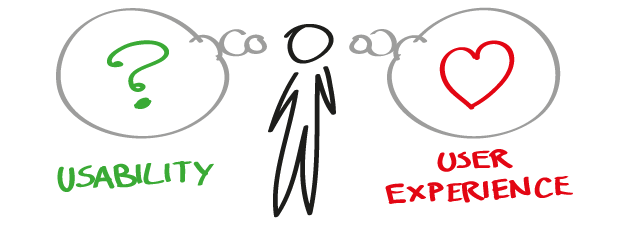The real importance of usability and user experience
 We hear a lot lately about user experience and usability and how these two play a key role in the introduction of new products into the market, but it is important to know exactly WHAT kind of role they actually play and how they can affect not only our product, but our whole business.
We hear a lot lately about user experience and usability and how these two play a key role in the introduction of new products into the market, but it is important to know exactly WHAT kind of role they actually play and how they can affect not only our product, but our whole business.
What’s going on with consumer electronics?
To start off, let’s take a look at what’s going on in the world of consumer electronics, which make up a huge chunk of the products where usability and user experience are so important.
There are a couple of very easily identifiable trends in the evolution of consumer electronics.
- They are becoming digital and thus “form-free”.
Think of the size of the housing of an old-school television, which was greatly limited by the volume required to properly use a cathode-ray tube. Compare it now to modern LED screen TV’s, which can be very thin no matter how big you want them. - They offer more and more functionality.
A mobile phone for example, is no longer just a phone. It’s a camera, a photo album, an agenda, a contact book, a gateway to the internet, a gaming console, a word processor… and this “appification” of devices is just getting started. - They are networked.
A product is no longer just the physical product. It is part of a network of systems and services that work as part of a symbiotic environment. Your iPod communicates with your PC to load music, can talk to LastFM which recommends new music and can stream your tunes to a set of wireless speakers.
This all has as an effect on how we perceive and use products. “Guessability” (our ability to guess how a product works) is a much harder challenge now that form does not necessarily follows function (an LP and a record player were bound to each other by their matching forms, but this is not the case anymore with a digital music player). And all of this has of course an effect on the usability of our products.
But what is usability?
Usability is a measurement of how well a system allows us to interact with it and achieve our goals. It focuses on users, systems, environments and tasks (Shackel, 1984).
Usability not only deals with how easy to use a product is, but also whether or not a user manages to do with the product what he wanted to and how the product allows him to do these things within the specific environment and circumstances in which he finds himself in.
As an example, think about this: Which is more usable, a book or an e-reader?
If we only consider the ease of use, the book will most likely be seen as the better product, in the sense that it is much easier to guess how it works. But if the scenario was a person wanting to go on vacation and taking a lot of reading material with him, and if we take the whole scope of usability into account, meaning the goals of the user, the environment and how easy to use it is, an e-reader could be much more usable in the sense that it can carry much more information in a compact and more portable device (of course, so long as the interaction design of the device is also optimized for ease of use).
And how is this different from User Experience?
Usability is NOT to be confused with User Experience. While usability deals with how we interact with a product, user experience deals with how we FEEL about this interaction. It is an (emotional) assessment of how we perceive a product and our interaction with it, whether we are satisfied and happy or frustrated and disillusioned.
So how are these two important for my product and my business?
Usability is important if you want to ensure developing a good quality product (at least in terms of interaction), and it directly affects how your users feel about your product (the user experience), both of which should be part of the goal of every self-respecting designer.
But beyond our personal goal of developing a good product, usability and user experience play a key role on how well our products do on the market and it can have a tremendous business impact for the whole organization.
 Bad usability can cost you money. As a result of bad usability, a business can get an increased amount of helpdesk calls (money) and a higher product return rate (more money). But even worse, as a result of the impact bad usability has on user experience (a frustrated user), it can have an even bigger effect on your business in the form of diminished repurchase intent (a dissatisfied customer will not come back) and brand damage (people talking bad about your product to other people).
Bad usability can cost you money. As a result of bad usability, a business can get an increased amount of helpdesk calls (money) and a higher product return rate (more money). But even worse, as a result of the impact bad usability has on user experience (a frustrated user), it can have an even bigger effect on your business in the form of diminished repurchase intent (a dissatisfied customer will not come back) and brand damage (people talking bad about your product to other people).
Better usability then, does NOT increase purchase intent, but it DOES play an important role on the user experience, which can affect whether people buy your products again and whether they will recommend them to other potential customers.





